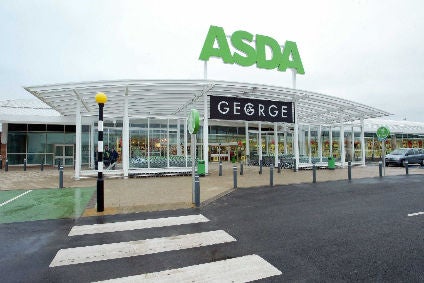
Despite the warning from a UK government watchdog that the proposed merger between supermarkets Asda and Sainsbury’s could lead to a “substantial lessening of competition” in 463 areas across the UK, the move is no less likely to be approved, one analyst says.
The retail groups first confirmed plans to merge in April of this year. The deal, should it go ahead, would give the companies a bigger market share than Tesco and create one of the UK’s leading grocery, general merchandise and clothing retail chains, with combined revenues of GBP51bn (US$70.1bn) in 2017.

Discover B2B Marketing That Performs
Combine business intelligence and editorial excellence to reach engaged professionals across 36 leading media platforms.
With more than 8m customers regularly buying its Tu clothing, Sainsbury’s is the sixth largest clothing retailer by volume in the UK. It hails a “strong” position in both the womenswear and childrenswear markets and says there are opportunities for future growth in menswear, which now accounts for 15% of clothing sales and is the retailer’s fastest growing clothing category.
If coupled with Asda’s successful George clothing line, the combined business could stand as a competitor to the likes of UK value clothing retailers such as Primark.
The merger, however, needs to be approved by the competition regulator and has already seen the CEO’s of both Sainsbury’s and Asda grilled by MPs with the two UK supermarket chains told the cost of the deal will likely end up falling on the groups’ suppliers.
In August, the Competition and Markets Authority (CMA) opened its initial (Phase 1) investigation into the merger and announced the companies had requested a ‘fast-track’ referral to Phase 2.

US Tariffs are shifting - will you react or anticipate?
Don’t let policy changes catch you off guard. Stay proactive with real-time data and expert analysis.
By GlobalDataThe CMA has now confirmed that the deal raises “sufficient concerns” to be referred for a more in-depth Phase 2 investigation, led by an inquiry group chosen from the CMA’s independent panel members, with the concerns to be considered including those relating to fuel, general merchandise (such as clothing) and increased ‘buyer power’ over suppliers.
The group will gather evidence – in particular through multiple customer surveys and engagement with other retailers, suppliers and industry bodies – to inform its detailed analysis.
In its decision statement yesterday (27 September), the CMA said there is a “realistic prospect” that the merger would lead to a “substantial lessening of competition” (SLC), confirming it will be referred for a more in-depth investigation.
“At a local level, the parties’ stores overlap in several hundred local areas across the UK,” it said. “The CMA believes that the merger may give rise to a realistic prospect of an SLC in many of these local areas if Sainsbury’s and Asda are insufficiently constrained by other local competitors.”
Based on its assessment, the government watchdog said it believes that the merger gives rise to a realistic prospect of an SLC in 463 local areas.
But the overlaps alone would not be enough to derail the deal, says Patrick O’Brien, UK retail research director at GlobalData.
“While the CMA has signalled that there is the threat of substantial lessening of competition in 463 areas across the UK as part of its Phase 1 investigation, this should not be taken as an indication that the merger is less likely to be approved.
“The methodology used in Phase 1 is a cruder calculation based on identifying whether or not the number of fascias in a catchment area would be reduced to less than four as a result of the combination of Asda and Sainsbury’s. In Phase 2, the CMA will be applying the much more complex ‘weighted share of shops’ technique, which is expected to weight the impact of competitors by how close they are geographically, and how closely they compete for the same shopping missions.”
Whether the merger goes ahead is dependent on the number of disposals the CMA demands being palatable to the merging parties, O’Brien says. How far the number of problem areas falls to in Phase 2 hangs on how the CMA treats Sainsbury’s request that stores smaller than 1,400 sq metres should be considered to have a competitive impact on larger supermarkets.
“Most Aldi and Lidl stores fall under 1,400 sq metres, but most of Asda’s stores are larger,” he says. “For the purposes of Phase 1, the CMA kept them apart, and yet it makes little sense to think that the former has no impact on the latter, even if they don’t always compete for the same shopping missions.”





